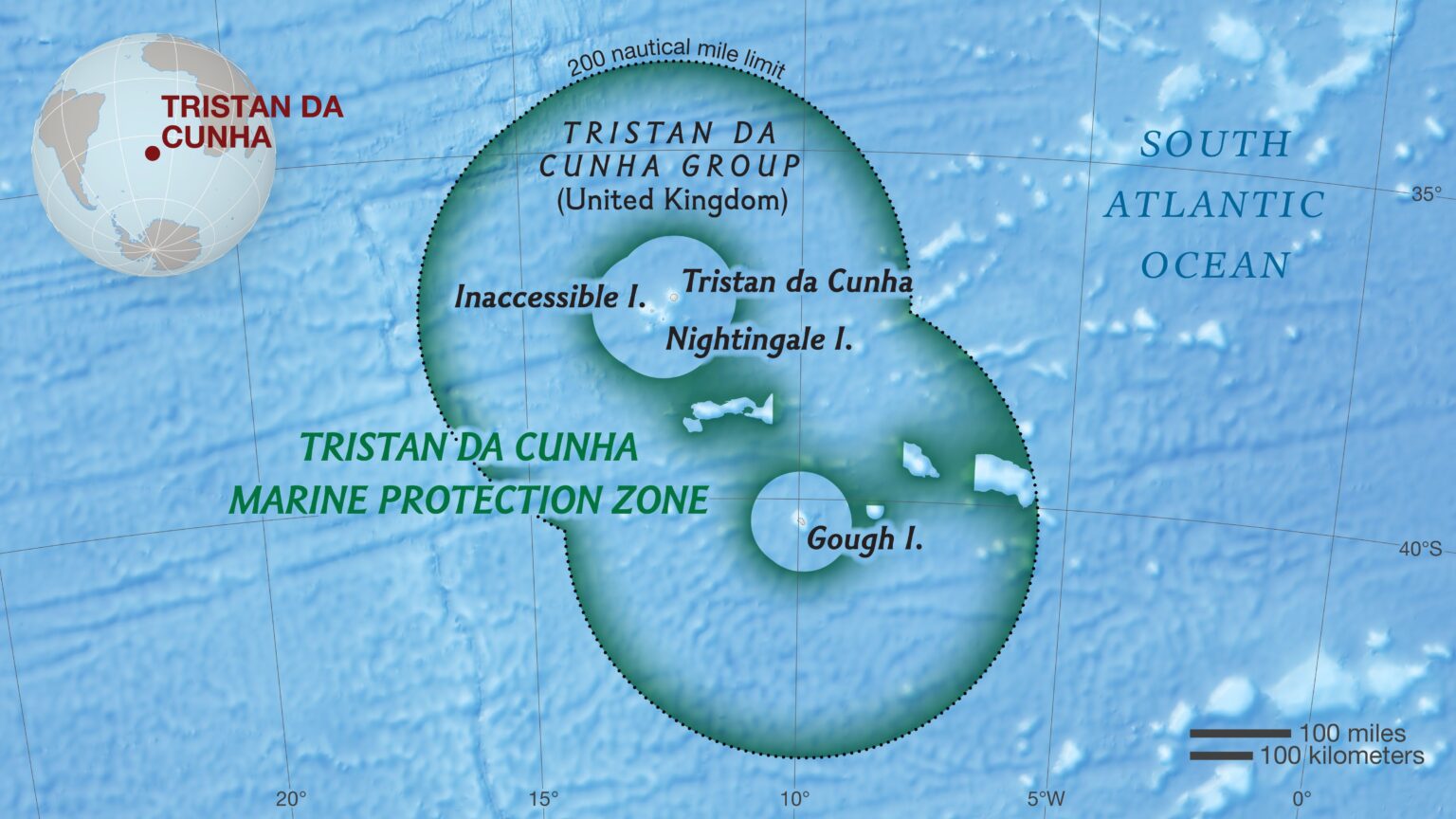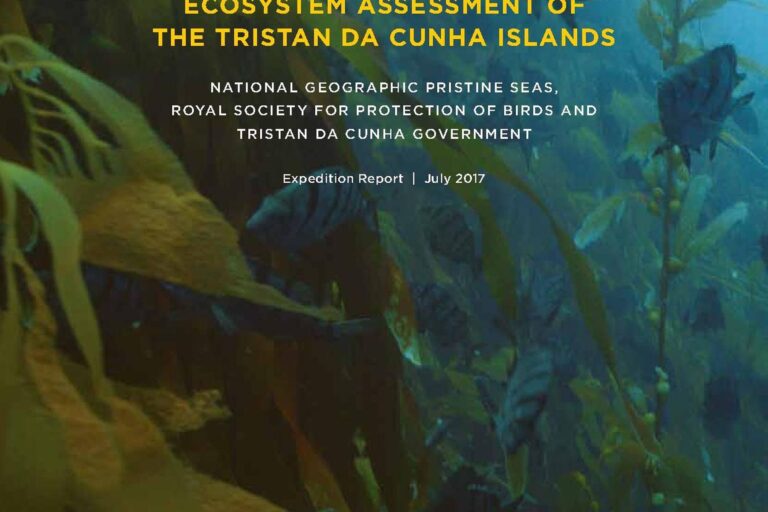Tristan da Cunha
At Sea: January to February 2017
Country: United Kingdom
The Place
Tristan da Cunha, the most remote inhabited island in the world, is over 2,700 kilometers from South Africa and 3,700 kilometers from the nearest shores of South America. Sitting between the South Atlantic Current to the north and the Antarctic Circumpolar Current to the south, the volcanic island and its archipelago are a hotspot of endemic biodiversity both on land and at sea.
Among the wildlife found here are seven-gill sharks, blue sharks, shortfin mako sharks, southern right whales, fin whales, humpback whales, sperm whales, dolphins, elephant seals, and albatrosses, as well as 200,000 rockhopper penguins, more than five million shearwaters, and 300,000 sub-Antarctic fur seals.
An overseas territory of the U.K., the Tristan da Cunha island group comprises Tristan da Cunha, Nightingale, Inaccessible, and Gough Islands.

The Mission
In collaboration with the Royal Society for the Protection of Birds (RSPB) and the Tristan da Cunha government, Pristine Seas launched an expedition to Tristan da Cunha in January 2017. Spending 20 days at the archipelago, the team carried out quantitative surveys of shallow flora and fauna, open-water communities, and deep-sea habitats to determine the health of its largely unknown marine environment.
The team obtained their data during scuba dives and from baited stereo cameras and deep-water drop cams. They used satellite tags to examine the movements of apex predators, such as sharks, and conducted botanical work and bird and seal studies.
Among their findings: Migratory blue sharks—the most heavily fished sharks in the world, highly prized for their fins—may have found a refuge in Tristan da Cunha’s waters. The team saw more blue sharks here than in any other location they’ve sampled.
there is a most wonderful sense of the power of nature in this perfectly balanced ecosystem."
The Result
The Highlights
Aboard the S.V.S. Grenville, suspicious albatrosses eye the team’s bird tags, and passengers ready themselves for Tristan’s heavy biosecurity. An exciting passage to Gough Island is interrupted when the ship’s engine stops dead. Trespassing birds force the ship to go dark. This is one of the world’s most desirable lobsters. Intrepid team members achieve a first for the surfing world.
